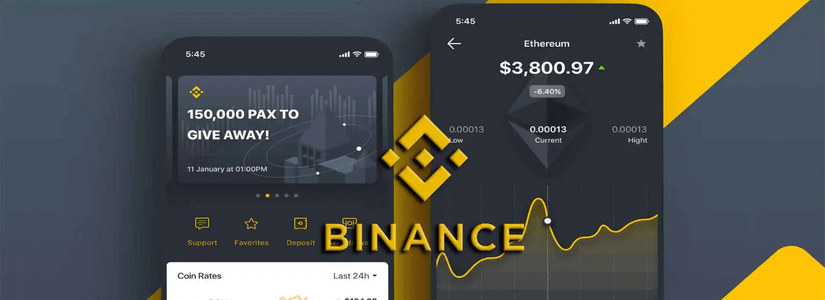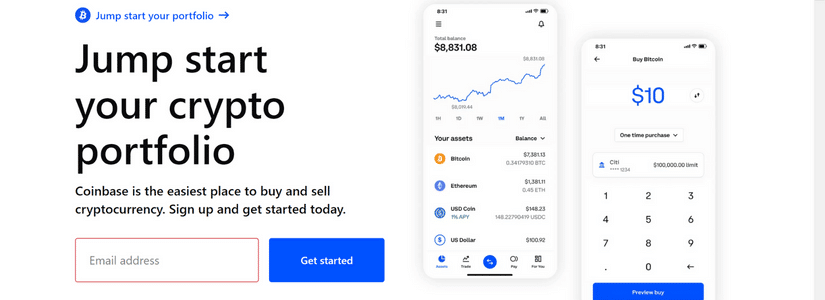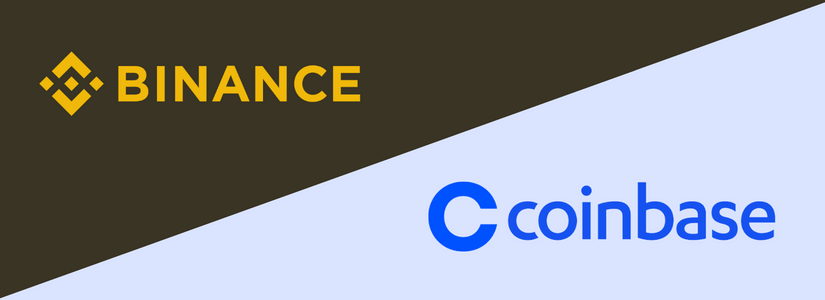Cryptocurrency trading has grown to become increasingly popular in recent years, and as a result, there has been an upsurge in the number of cryptocurrency exchanges—both centralized and decentralized. However, two of the most well-known and widely used centralized exchanges are Binance and Coinbase.
They are presumably the two most-compared cryptocurrency trading platforms and also serve as two of the biggest names for users. Both exchanges offer a range of crypto services, but which is better?
In this article, we will compare Binance vs Coinbase to help you decide which exchange is the best for you.
Binance Features
Binance was founded by Changpeng Zhao (CZ) in 2017 and has quickly risen to become the world’s largest centralized cryptocurrency exchange in terms of trading volumes and market capitalization. It offers Bitcoin (BTC), Ethereum (ETH), Cardano (ADA), Solana (SOL), and almost 400 other cryptocurrency tokens for trading.
Although Binance is available in more than 180 countries with over 90 million users worldwide, the crypto firm had to establish a separate entity, Binance.US, just for users in the United States as a result of the increasingly complex local jurisdictional restrictions in that nation.

Binance released its native cryptocurrency, Binance Coin (BNB), soon after the global exchange went live. BNB Coin has since evolved into one of the top coins by market capitalization. It also subsequently introduced the Binance Smart Chain (BSC) blockchain network, which offers smart contract functionalities like Ethereum’s blockchain.
Binance Pros
- Binance offers over 400 cryptocurrencies for trading
- It offers cheaper transaction fees
- Availability of several tools for easy and advanced trading experience
- Multiple methods to purchase cryptocurrencies and fund accounts, including peer-to-peer (P2P)
- Binance Crypto Card for online and offline payments
Binance Cons
- A wide range of tool selections can be confusing for beginner traders.
- Always under regulatory spotlights
Coinbase Features
Coinbase was co-founded in 2012 by Brian Armstrong, a former Airbnb software engineer, and Fred Ehrsam, a co-founder of the San Francisco-based Paradigm. As one of the earliest cryptocurrency exchanges, Coinbase has become one of the most popular exchanges in the world and the most popular in the United States.
The original Coinbase platform is probably preferred by beginners for clear and simple crypto buy and sell orders. In November 2022, the company began migrating more sophisticated Coinbase Pro accounts to a new advanced platform called “Advanced Trade.”

The exchange has users in over 100 countries and is currently the second-largest cryptocurrency exchange in terms of trading volume, according to Coinmarketcap data.
Coinbase Pros
- Offers a wide range of cryptos for trading
- Coinbase Vaults for added assets security
- Simple and advanced trading to suit each user’s investment preferences
- Visa Card for both online and offline payments
- Opportunities to earn free cryptos by learning
Coinbase Cons
- Complicated fee structure
- Poor customer support
- High trading fees on certain services
Which exchange charges less commissions: Binance or Coinbase
When this criterion is considered in this Binance vs Coinbase comparison, we can rightly say that Binance has the lowest trading fee percentage of 0.10%, while Coinbase comes with a fee of up to 3.99%. Also, Coinbase levies a 25% yield commission. That’s a substantial commission compared with Binance and other top crypto exchanges.
Coinbase has a complicated, exorbitant, and mostly concealed fee structure that can consume significant portions of newbie users’ cryptocurrency purchases. Depending on whether you’re a maker or a taker, the America-largest exchange offers rates of 0.6% or 0.4% (for the pricing tier of $0 to $10,000).
On the other hand, Binance offers far lower transaction fees, having a fee structure that attracts high-volume traders.
Binance vs Coinbase: Which exchange is the safest

Binance supports stringent two-factor authentication sign-in procedures employing hardware, app-based, SMS, and email login options. Advanced access control offers users opt-in security features including IP and wallet address whitelisting, API access control, and device management.
On the other hand, Coinbase assures to keep 98% of assets offline in “geographically separated cold storage” and says that all bitcoins housed on internet servers are insured. It also provides two-factor authentication by SMS, email, and the Authenticator applications from Microsoft and Google.
Moreover, it offers a function known as “The Coinbase Vault,” which enables users to receive cryptocurrencies as they would with a regular wallet but also offers the opportunity to install additional security measures to prohibit the quick withdrawal of stored assets.
Although custodial platforms like cryptocurrency exchanges employ high levels of security standards, leaving assets there is still not strongly advised, and users should be mindful of the possible risks involved. Placing money in a personal, non-custodial wallet like MetaMask or Trust Wallet is considerably better.
Which exchange offers better staking rewards?
This is another area in which Binance and Coinbase have key differences. Among the two, Coinbase presents users with more chances of earning rewards.
Coinbase offers a staking option for a small selection of cryptocurrencies, including Cosmos (ATOM), USDC, Tezos (XTZ), and Algorand (ALGO), in addition to free cryptocurrency rewards for watching certain project-related training videos. When customers stake the cryptocurrency Cosmos (ATOM), for instance, Coinbase offers interest payments of up to 6.12% APR.
On the other hand, Binance enables users to get rewards on a variety of cryptocurrencies, including Ethereum (ETH), Shiba Inu (SHIB), Binance Coin (BNB), and stablecoins like BUSD and USDT. Users can earn up to 7.5% estimated APR if they subscribe to stake Solana (SOL) coins for 120 days, for example.
Comparative Table: Binance vs Coinbase
| Binance | Coinbase | |
| Foundation date | July 2017 | May 2012 |
| Country | Cayman Islands | San Francisco, United States |
| Fees | 0% on BTC and BUSD Spot Trading Pairs. 0.6% in Spot Trading Fees, and 3.75% in Debit Card Fees | Between 0.0% and 4% |
| Nº of Cryptos supported | Over 350 Cryptos | Over 200 Cryptos |
| P2P Platform? | YES | NO |
| Security (features) | 2FA (Google Authenticator, SMS, Email, Touch, and Face ID) | TOTP (Google Authenticator, DUO Mobile, Microsoft Authenticator, SMS), Coinbase Vault. |
| Derivatives trading? | YES | YES |
| Payment Methods | Bank Deposit, Credit/Debit Card, P2P Trading, 3rd Party Payment (via Banxa and Simplex), PayPal. | Bank Account (IMPS), Debit/Credit Card, Google Pay, Apple Pay, Bank Wire, PayPal. |
| Easy to use (Low /Medium / Hard) | Hard | Medium |
| Crypto Economy Valuation | 95 | 90 |
Conclusion
Both Binance and Coinbase have advantages as well as disadvantages, but if we had to sum up the two exchanges in a single sentence, Coinbase is relatively simple to use and better suited for novice traders, while Binance is more cost-effective and perfectly suited for experienced traders.
When comparing Binance vs. Coinbase, it’s hard to pinpoint which trading platform is better. The most crucial factors to consider when selecting the best cryptocurrency exchange are the trading fees and other paid functionalities, security level, supported cryptos, accepted methods of payment, operating nations, and reputation in the market.
This article should be considered for informational purposes only. Crypto Economy does not make any investment advice nor is it associated with any exchange or company mentioned. Before investing in cryptocurrencies do your own research.



